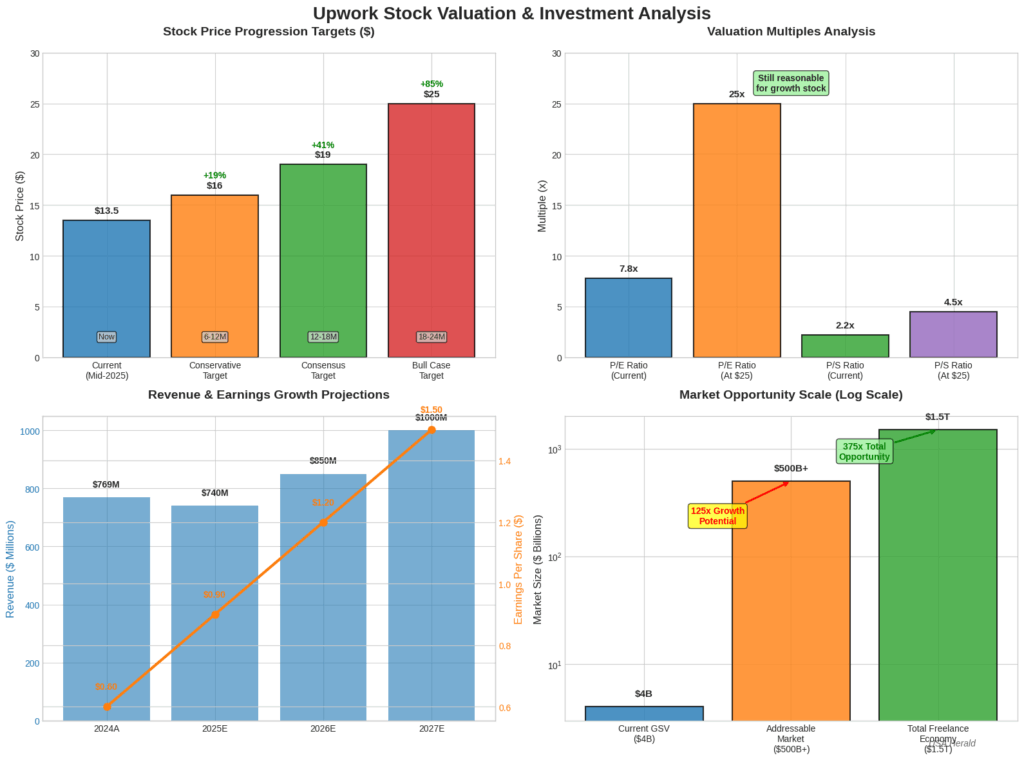
It’s worth noting that Upwork’s public recognition and thought leadership in AI also bolster investor confidence. Being named a Fast Company Innovator for its AI work and landing on lists of top AI-fueled companies has given Upwork added credibility. The company has formed an Economic Advisory Council focused on AI’s impact on work and launched a Research Institute to guide organizations in workforce transformation, positioning itself as a forward-looking authority in the space. All these efforts signal to investors that Upwork is not resting on its freelancer marketplace laurels – it is actively evolving with the AI era.
Of course, the market will continue to watch how effectively Upwork converts AI buzz into sustained growth. Metrics like GSV, client spend, and active clients will show if AI features drive more activity and attract new users. For now, early signs are encouraging: even as total active clients dipped amid macro pressures, spend per client is rising again (up year-over-year in Q1’25 for the first time in 6 quarters) and big clients are signing on to AI-enabled premium offerings like Upwork’s Business Plus plani. Analysts have remarked that Upwork is showing “renewed strength” after a period of weakness, with the AI strategy contributing to that turnaround. Should the trend continue, the stock’s current levels could indeed prove a springboard – with $25+ as a plausible near-term milestone, and even more upside long-term if Upwork solidifies itself as the premier platform for AI-age freelancing.
Competing in an AI-Empowered Gig Economy: Upwork vs. The Rest
Upwork is not alone in leveraging AI in the freelancing and staffing world – but its approach has some clear differentiators when compared to competitors like Fiverr and traditional staffing firms. Fiverr, another major freelance marketplace, has also embraced generative AI but with a different focus. Fiverr’s strategy centers on creative services: in 2025 it launched “Fiverr Go,” an AI platform aimed at creative freelancers (designers, writers, voice artists). Fiverr Go allows freelancers to train personalized AI models on their own work and use AI tools to augment their creative output, all while keeping the human creator in control. Fiverr’s CEO Micha Kaufman contrasted this with other AI solutions that “exploit human creativity”; Fiverr Go is meant to “empower a robust ecosystem of humans and AI that deliver beautiful results… while supercharging freelancers’ earning power,” he said. In practice, Fiverr is opening its large transaction dataset and 6.5 billion+ user interactions to enable third-party developers to build AI applications on its platform – essentially an app store for AI tools that freelancers can plug into their gigs. It’s a bold experiment to merge an open developer ecosystem with a freelance marketplace, and if successful, it will ensure AI “augments rather than replaces” creative workers on Fiverr.


